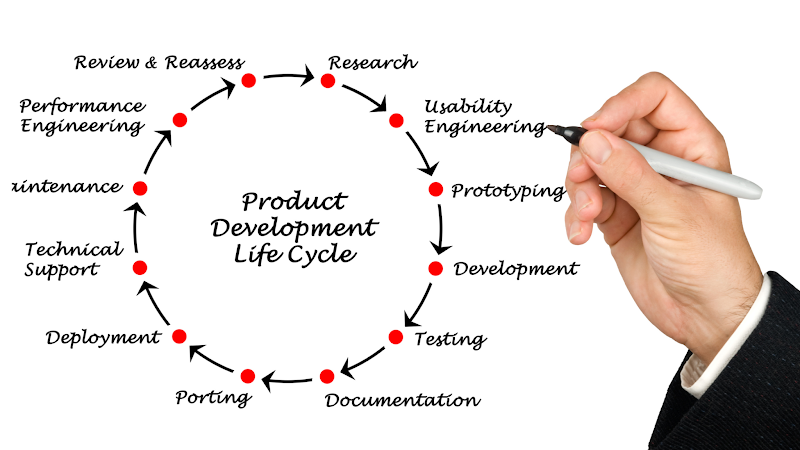5 Ways In-Home Usage Testing Transforms Your Product Development Strategy

Product development teams often overlook a crucial step in their quest for innovation: understanding how consumers interact with their products in real-world settings. This oversight can lead to missed opportunities, wasted resources, and products that fail to resonate with target audiences. To bridge this gap, forward-thinking companies are turning to a powerful research method that provides unparalleled insights into consumer behavior and preferences.
How In-Home Usage Testing Provides Authentic Consumer Insights
Through in-home usage testing, companies can observe and analyze how consumers use products in their natural environments, providing insights that are far more genuine than those from controlled settings. This approach yields authentic feedback that can dramatically reshape product development strategies. By placing products directly in the hands of consumers in their own homes, businesses gain a wealth of information that lab testing and focus groups simply can’t match.
1. Uncover Hidden User Behaviors and Pain Points
Traditional product testing often fails to capture the nuances of how consumers use products in their daily lives. In-home usage testing reveals:
- Unexpected use cases: Discover how consumers adapt products for purposes you never anticipated.
- Environmental factors: Understand how home layouts, lighting, and other contextual elements affect product use.
- User workarounds: Identify pain points that users have learned to work around, but haven’t reported.
Real-world example: A kitchen appliance manufacturer discovered through in-home testing that users were repurposing their food processor to grind coffee beans, leading to a new product line development.
2. Enhance Product Functionality and Design
Armed with insights from real-world usage, product teams can make informed decisions about:
- Feature prioritization: Focus development efforts on the features that truly matter to users.
- Ergonomic improvements: Refine product design based on observed user interactions.
- Usability enhancements: Simplify instructions and interfaces based on common user struggles.
3. Validate Marketing Claims and Messaging
In-home usage testing provides a reality check for marketing teams:
- Confirm product benefits: Ensure claimed benefits align with actual user experiences.
- Refine value propositions: Adjust messaging to highlight the features users value most.
- Identify new selling points: Uncover unexpected benefits that emerge during real-world use.
4. Accelerate Product Iteration and Innovation
By integrating in-home usage testing into the development cycle, companies can:
- Catch issues early: Identify and address problems before they become costly to fix.
- Reduce time-to-market: Make informed decisions quickly based on real user feedback.
- Drive continuous improvement: Establish a feedback loop for ongoing product refinement.
5. Build Stronger Customer Relationships

In-home usage testing fosters a deeper connection with consumers:
- Demonstrate customer-centricity: Show users their input directly shapes product development.
- Increase brand loyalty: Customers feel valued when their feedback is actively sought and implemented.
- Generate word-of-mouth marketing: Participants often become enthusiastic brand advocates.
Comparison: Traditional Testing vs. In-Home Usage Testing
| Aspect | Traditional Testing | In-Home Usage Testing |
| Environment | Controlled lab setting | Real-world home environment |
| Duration | Short, often single-session | Extended period (days to weeks) |
| User Behavior | Observed, but may be artificial | Natural, unmodified behavior |
| Feedback Type | Often structured, limited scope | Comprehensive, includes unexpected insights |
| Cost | Generally lower per session | Higher initial investment, but richer data |
| Applicability | Good for specific feature testing | Excellent for overall product experience |
| Innovation Potential | Limited by predetermined test parameters | High, due to unexpected use cases discovered |
Overcoming Challenges in In-Home Usage Testing
While the benefits are clear, implementing in-home testing comes with its own set of challenges:
- Participant recruitment: Find the right users who represent your target market.
Solution: Partner with specialized research firms or leverage customer databases. - Data collection and analysis: Managing large amounts of diverse feedback.
Solution: Utilize data analytics tools and establish clear evaluation criteria. - Balancing privacy and observation: Ensuring thorough testing without invading user privacy.
Solution: Implement ethical guidelines and transparent consent processes. - Cost management: Justifying the investment in extended testing periods.
Solution: Focus on long-term ROI and reduce costs by avoiding product failures.
Best Practices for Effective In-Home Usage Testing
To maximize the value of your in-home testing program:
- Set clear objectives: Define specific goals for each testing phase.
- Diversify your test group: Include a range of user profiles to get comprehensive insights.
- Combine methods: Use surveys, interviews, and usage logs alongside observational data.
- Involve cross-functional teams: Ensure insights reach all relevant departments.
- Follow up: Conduct post-testing interviews to clarify observations and gather additional feedback.
The Future of In-Home Usage Testing
As technology evolves, so do the possibilities for in-home testing:
- IoT integration: Smart devices that automatically log usage data and user interactions.
- AR and VR applications: Test product concepts in virtual home environments.
- AI-powered analysis: Advanced algorithms to identify patterns and insights from vast datasets.
- Remote monitoring capabilities: Gather real-time data without physical presence in homes.
Measuring the Impact of In-Home Usage Testing
To justify and optimize your in-home testing program, track key metrics:
- Product success rate: Increase in products meeting or exceeding sales targets.
- Customer satisfaction scores: Improvements in NPS or similar metrics post-launch.
- Development cycle efficiency: Reduction in time and resources spent on revisions.
- Market share growth: Gains attributed to products refined through in-home testing.
Conclusion: Embrace the Power of Real-World Insights
In-home usage testing represents a paradigm shift in product development strategy. By bringing the testing process into the very environments where products will be used, companies gain an unparalleled understanding of their customers’ needs, behaviors, and preferences.
This approach not only leads to better products but also fosters stronger customer relationships and drives innovation. In today’s competitive market, where consumer expectations are constantly evolving, in-home usage testing provides the edge companies need to stay ahead.
The question is no longer whether businesses can afford to implement in-home usage testing, but whether they can afford not to. The insights gained from this approach can mean the difference between a product that merely exists in the market and one that truly thrives.
Take action now: Evaluate your current product development process and identify opportunities to integrate in-home usage testing. Start with a pilot program for your next product iteration and experience firsthand the transformative power of real-world consumer insights.
FAQs
Q: How long should an in-home usage test typically last? A: The duration can vary depending on the product and research objectives, but most effective tests run from 1-4 weeks. This allows enough time for users to incorporate the product into their daily routines and provide meaningful feedback.
Q: Can in-home usage testing be conducted for digital products or services? A: Absolutely. For digital products, in-home usage testing might involve installing software or providing access to online services, then monitoring usage patterns, gathering feedback, and conducting remote interviews over the testing period.
Q: How do we ensure the privacy and comfort of participants during in-home testing? A: Establish clear guidelines for data collection, obtain informed consent, and give participants control over what they share. Use non-intrusive methods like self-reporting and scheduled check-ins rather than constant monitoring. Always prioritize participant comfort and respect for their personal space.



